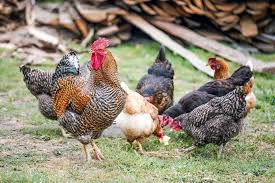
The Sunday Mail

Word from the market with
Terry Maphosa
FOR the past five years, Zimbabwe has seen a sharp rise in poultry farming, particularly the rearing of improved “roadrunner” chickens. Many people wonder whether the business is viable and lucrative or it is a matter of finding something to keep oneself busy, without a return on investment.
As an award-winning farmer, I will tackle key issues regarding this type of farming.
Why “roadrunner” chicken farming?
A “roadrunner” is a free-range chicken variety that scavenges for food and the meat is tougher — and tastier — than the cage-raised broiler variety. Many people are shifting from eating broilers for health reasons, and that is why there is a noticeable increase in the number of eateries that sell traditional food. Many people are now health-conscious and prefer eating “roadrunners” to broilers, and this gives a chance to farmers to scale up production as there is a ready market.
Breed selection
The success or failure of a “roadrunner” project usually depends on the breed a farmer chooses. There are breeds that are good at laying eggs but have small bodies, for example, the Rhode Island Red and the White Leghorn. Also available are breeds that lay eggs and have considerably big bodies, for instance, the Black Australorp, the New Hampshire and the Koekoek.
The advantage of the first type mentioned above is that it consumes less feed, but when a farmer decides to sell the chickens for meat, there is a disadvantage in that they have less weight, whereas the second variety produces more meat and eggs, which makes it a more desirable breed for a farming business.
There are some breeds that grow big and consume more feed, but do not lay a lot of eggs. Farmers are discouraged from buying such breeds. Buying them does not make business sense unless they are to be kept as pets. For “roadrunners” to thrive, they need to be kept healthy and in a clean environment, with proper maintenance.
A clear vaccination programme should be put in place. An ideal fowl run should have at least two openings that allow free movement of the birds to avoid keeping diseases inside.
Care for chicks
Care of the birds is critical in the sustainability of the business. A farmer should understand the sounds that chicks produce. These sounds are produced for various reasons. Chicks produce a particular sound when they are eating, hungry or when they are in discomfort. A serious farmer should maintain good temperatures and ensure proper vaccination.
He or she should also make sure the chicks are drinking clean water.
Supplementary heat is needed for the chicks and fully grown birds, especially in winter, so as to get the desired results.
The good part is that “roadrunner” chickens are much more resistant to diseases, and also record much lower mortality rates, compared to broilers, for instance.
After realising the importance of the sector, the Government last year introduced the Presidential Poultry Scheme, where thousands of chicks were distributed across the country as part of the Second Republic’s drive to alleviate poverty and boost incomes in line with the policy of leaving no one and no place behind. The livestock value chain is a pivotal sub-sector within the agricultural industry and a key income-generating area for farmers, and is likely to play an important role in the attainment of Vision 2030.
◆ Terry Maphosa is a “roadrunner” chicken. Word from the Market is a column produced by the Agricultural Marketing Authority (AMA) to promote market-driven production of agricultural crops. Feedback: [email protected] or WhatsApp +263781706212.



